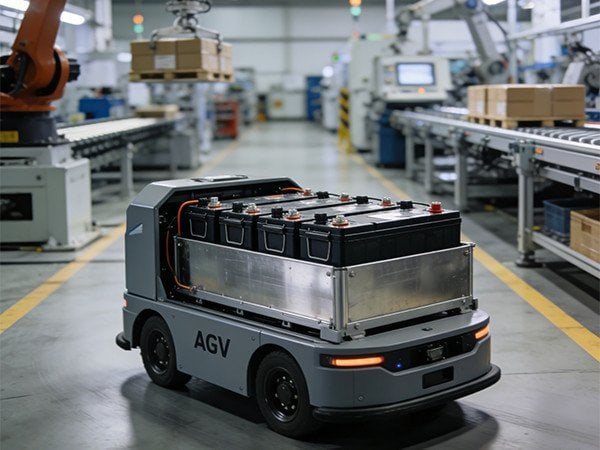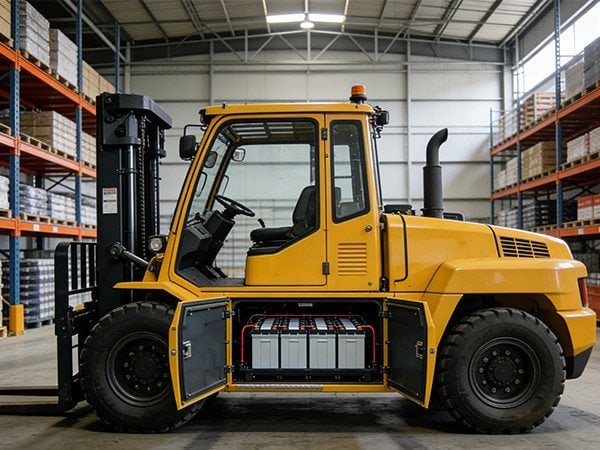パワフルでコンパクト、そして信頼性の高いバッテリーパックの背後には、高度に管理された精密な製造工程があります。この記事では、リチウム・バッテリー・パックがどのように組み立てられるのか、セルの選択から最終試験、梱包までの各工程に焦点を当てながら、包括的な概要をご紹介します。

バッテリーセルの選択
バッテリーパックの組み立て工程は、リチウムセルの選択から始まる。最も一般的に使用されるリチウムイオンセルは以下の3種類である:
円筒形セル(18650、21700など)
プリズムセル
パウチ細胞
各セルタイプは、エネルギー密度、熱管理、構造統合の面で異なる利点を提供する。例えば、高出力のEVは21700の円筒型セルを使うかもしれないし、スペースに制約のある機器は角柱型やパウチ型を好むかもしれない。
重要な考慮事項
電圧と容量の定格
内部抵抗
パフォーマンスの一貫性(マッチドセル)
メーカーの信頼性と安全性認証
組み立ての前に、セルは均一な性能を保証するために品質テストを受けます。電圧、内部抵抗、容量にばらつきがあると、非効率や安全性のリスクにつながります。
細胞のグレーディングとソーティング
セルが選択されると、選別または等級分けが行われる。このステップにより、電気的特性が類似したセルだけがバッテリーパックにまとめられ、性能と安全性が最適化されます。
ソート基準:
電圧範囲
内部抵抗
容量(mAhまたはAh)
製造日とバッチ
自動化された装置は、高度なアルゴリズムとロボットアームを使用して、大量の細胞を正確に処理し、このプロセスを実施することが多い。
バッテリーパックの設計と構成
バッテリーパックは、電力、電圧、電流、サイズ、重量、熱管理など、アプリケーションの要件を満たすように設計することが重要です。
一般的な構成:
直列接続(S):電圧を上げる
パラレル接続(P):電流/容量を増やす
例えば、13S4Pの構成は、13個のセルを直列に、4個のセルを並列に接続することを意味する。エンジニアはシミュレーション・ソフトウェアを使用して、最も効率的で安全な設計を決定します。
機械的構造:
セルホルダーとブラケット
断熱層
耐衝撃ケーシング
熱管理チャンネル
セルスポット溶接と相互接続
レイアウトが確認されると、セルは所定の位置に固定され、ニッケルストリップや銅導線を用いて電気的に接続される。
スポット溶接プロセス:
ニッケル・ストリップをセル端子にかぶせる
高電流パルスが局所的な熱を発生させ、ストリップをセルに溶接する。
溶接は強く、導電性で、きれいでなければならない。
レーザー溶接も、その精度と熱影響の低減で人気を集めている。
バッテリー管理システム(BMS)の統合
バッテリー・マネジメント・システム(BMS)は、バッテリー・パックの動作を監視・制御する重要なコンポーネントです。
BMSの機能:
電圧、温度、電流の監視
セル間の電荷バランス
過充電、過放電、過電流、短絡に対する保護を提供
外部システムとの通信(CANバスまたはUART)
ワイヤーハーネスがBMSと各セルシリーズを接続し、正確なモニタリングを保証します。BMSボードは通常、バッテリーパックの上部または側面に取り付けられています。
断熱と熱管理
バッテリーパックの設計では安全性が最も重要です。熱暴走や短絡を防ぐためには、適切な絶縁材料と放熱システムが不可欠です。
断熱技術:
セル間のカプトンまたはフィッシュペーパー
パック周りの熱収縮チューブ
衝撃吸収用フォームパッド
サーマル・ソリューション
空冷チャンネル
ヒートシンクまたはアルミプレート
相変化材料または液冷(高性能アプリケーション用)
エンクロージャーとメカニカル・アセンブリ
組み立てられたセル、配線、BMSは、物理的な損傷、湿気、ほこりからパックを保護するために保護ケーシングに収められている。
ケースの種類
プラスチック射出成形エンクロージャー
アルミニウム合金ケーシング
カスタム3Dプリントホルダー(少量生産用)
ケーシングは多くの場合、超音波溶接や工業用接着剤で密閉され、安全のために通気口や圧力開放弁が設けられることもある。
テストと品質管理
すべてのリチウム電池パックは、出荷前に厳格なテストを受けています。
電気テスト:
電圧と容量の検証
充放電サイクル試験
負荷とインピーダンスのチェック
安全テスト:
短絡保護
過電圧および低電圧応答
負荷時の温度上昇
目視検査:
スポット溶接の完全性
コネクタの位置合わせ
ケーシングの欠陥
多くのメーカーは、一貫性とトレーサビリティを確保するために自動検査ステーションを使用している。
ラベリングとコンプライアンス
国際的な安全および輸送規制を満たすため、バッテリーパックには適切なラベルを貼付する必要があります。これには以下が含まれます:
定格電圧と容量
メーカー名と連絡先
適合マーク(CE、UL、UN38.3など)
トレーサビリティのためのQRコードまたはバーコード
UN38.3試験は、航空輸送を目的とするバッテリーにとって特に重要である。
パッケージングとロジスティクス
最後のステップは、出荷のためのバッテリーの梱包です。物理的または静電気による損傷を防ぐため、帯電防止袋、発泡インサート、頑丈なカートンが使用されます。
一部の貨物では必要です:
危険物申告
特別な表示(「リチウム電池内蔵」など)
通関書類
バッテリーパック組立の動向と革新
バッテリー産業は急速に進化しており、自動化、AI、持続可能性が次世代のパック生産を牽引している。
リチウム・バッテリー・パックの組み立ては、高度な技術と品質に敏感なプロセスです。セルの選択と構成からBMSの統合と安全テストに至るまで、各工程は最終製品が安全で耐久性があり、高性能であることを保証するために重要な役割を果たします。







